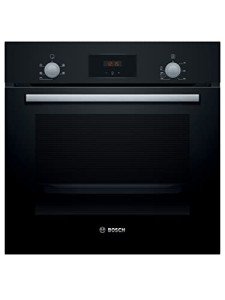Are Built In Oven Uk As Important As Everyone Says?
The Rise of Built-In Ovens in the UK: A Comprehensive Guide
Built-in ovens have ended up being a necessary function in contemporary kitchens across the UK. Combining style, performance, and technology, these appliances can enhance both the visual and operational elements of culinary spaces. As property owners strive for performance, style flexibility, and technological innovation, built-in ovens have actually become a preferred option. This short article will check out the advantages, types, functions, and top brands of built-in ovens readily available in the UK, in addition to a guide to assist consumers make informed options.
Advantages of Built-In Ovens
Built-in ovens offer numerous benefits over traditional freestanding models. Here are some of the key advantages:
- Space Efficiency: Built-in ovens can be integrated into kitchen cabinets, freeing up floor area and developing a seamless appearance.
- Smooth Design: Available in numerous finishes and designs, built-in ovens can elevate the total aesthetic of the kitchen.
- Multi-Functionality: Many built-in ovens featured additional functions such as convection, steam cooking, and self-cleaning choices.
- Improved Accessibility: Positioned at eye level, built-in ovens offer simpler gain access to, reducing the requirement to flex down, which can be particularly advantageous for those with movement concerns.
- Boosted Technology: With clever innovation integration, many built-in ovens permit users to manage cooking time and temperature from their smart devices while providing sophisticated cooking options.
- Increased Resale Value: Homes geared up with modern-day built-in appliances often bring in buyers more quickly, possibly increasing home value.
Kinds Of Built-In Ovens
Choosing the best type of built-in oven is essential for meeting specific cooking requirements. Here are the typical types:
Type
Description
Single Oven
A standard alternative perfect for smaller sized kitchen areas, accommodates one cooking compartment.
Double Oven
Uses 2 different compartments, permitting simultaneous cooking at different temperatures.
Compact Oven
A smaller sized version, best for restricted areas, typically incorporating multifunctionality.
Steam Ovens
Usage steam for cooking, keeping wetness and nutrients, excellent for healthy meals.
Convection Ovens
Flow hot air for even cooking, lowering cooking energy and times usage.
Combination Ovens
Integrate microwave abilities, providing flexibility for fast meals or re-heating alternatives.
Key Features to Consider
When picking a built-in oven, it's important to think about particular vital features that match individual requirements. The table below highlights a few of the essential features to search for:
Feature
Description
Capacity
Determined in litres; select based on family requirements and cooking frequency.
Energy Rating
Suggests energy efficiency; appearance for A or higher rankings to conserve on energy bills.
Control Options
Choices may consist of knobs, touch controls, or smart innovation for convenience.
Cleaning Type
Think about options like self-cleaning or steam cleansing for easier upkeep.
Guarantee & & Support
Examine the warranty used by the maker for peace of mind.
Popular Brands of Built-In Ovens in the UK
When purchasing a built-in oven, it's suggested to consider trusted brands known for their quality and client support. Some of the leading brand names available in the UK include:
- Neff
- Bosch
- Miele
- Siemens
- Smeg
- AEG
- Electrolux
- Zanussi
These brands are acknowledged for their innovation, reliability, and variety of features, dealing with different consumer choices and budgets.
Setup Tips for Built-In Ovens
Correct installation is vital for the functionality and security of built-in ovens. Here are some necessary tips:
- Professional Installation: Engage a qualified electrical contractor or installer familiar with built-in systems to ensure safety and compliance with UK policies.
- Space Planning: Measure cabinet dimensions precisely and think about ventilation requirements.
- Examine Electrical Supply: Ensure the power supply meets the oven's requirements to prevent electrical failures.
- Usage Manufacturer Guidelines: Follow the manufacturer's directions for installation to avoid voiding warranties.
Regularly Asked Questions (FAQs)
1. How do I pick the ideal size built-in oven?
When picking a built-in oven size, consider the available kitchen area, your cooking routines, and family size. It's important to measure the cabinet space precisely before purchasing.
2. Can I install a built-in oven myself?
While it's technically possible, it is extremely suggested to utilize a professional installer to make sure safety and to adhere to structure policies, particularly regarding electrical connections.
3. What is the typical cost of a built-in oven in the UK?
The price of built-in ovens differs widely depending upon functions, capacity, and brand name. On average, customers can expect to pay between ₤ 300 to ₤ 2,500.
4. Are built-in ovens more energy-efficient than standalone ovens?
Lots of built-in ovens are created with energy-efficient technology, frequently ranked higher than standalone models, making them a better long-lasting investment for energy cost savings.
5. What maintenance is needed for built-in ovens?
Routine cleaning, examining seals and gaskets, and making sure ventilation slots are clear are necessary for preserving the efficiency of built-in ovens.
Built-in ovens represent a blend of style, functionality, and advanced cooking technology, making them a popular option among UK property owners. Comprehending built in double gas oven and hob packages , types, and functions of these appliances will empower consumers to make educated choices that enhance their cooking experiences. With numerous credible brands readily available and an increasing concentrate on energy efficiency and clever technology, the future of built-in ovens looks brighter than ever in the UK kitchen landscape.
